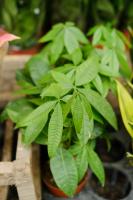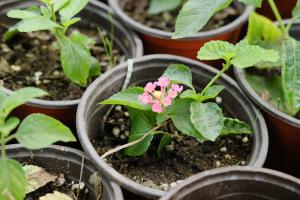When to Plant Fig Trees in Zone 7
Fig trees are a great addition to any garden or landscape, providing both delicious fruit and ornamental value. For those living in Zone 7, which covers much of the mid-Atlantic region of the United States, it's important to choose the right time to plant fig trees to ensure they thrive. Here's what you need to know about when to plant fig trees in Zone 7.
Choosing the Right Time of Year
The ideal time to plant fig trees in Zone 7 is in the late winter or early spring, after the last frost of the season. This usually occurs in late February or early March. Planting during this time allows the fig tree to establish its roots before the hot summer months arrive.
It's also possible to plant fig trees in the fall, though this will depend on the weather conditions and the maturity of the tree. If you decide to plant in the fall, aim to do so in late October or November, well before the first frost of the season. This will give the tree enough time to establish its roots before going into dormancy in the winter.
Preparing the Site
Before planting your fig tree, it's important to choose a suitable site. Look for an area that gets plenty of sunlight and has well-draining soil. You should also consider the mature size of the tree, which can range from 10 to 30 feet in height and spread. Make sure you have enough space for your tree to grow to its full size.
Once you've chosen your site, it's time to prepare the soil. Dig a hole that is twice as wide as the root ball and just as deep. Mix in some compost or other organic matter to help improve the soil's fertility and structure.
Planting Your Fig Tree
When planting your fig tree, gently remove it from its container and loosen any roots that are tightly wound. Place the tree in the hole so that the top of the root ball is level with the soil surface. Make sure the tree is straight and upright, then backfill the hole with soil, gently packing it around the roots to remove any air pockets. Water the tree thoroughly to settle the soil and promote root growth.
If you're planting multiple fig trees, make sure they are spaced at least 15 to 20 feet apart to allow for proper growth and fruit production.
Caring for Your Fig Tree
After planting your fig tree, it's important to care for it properly to ensure its health and longevity. Water the tree regularly, especially during its first year, to help it establish its roots. You should also fertilize the tree with a balanced fertilizer once a year in the spring.
Pruning is also important for fig trees. Remove any dead or diseased wood, and prune the tree in the late winter or early spring to promote healthy growth and fruit production.
Conclusion
Planting fig trees in Zone 7 requires careful consideration of timing, soil conditions, and proper care. By following these tips, you can ensure that your fig tree thrives and produces delicious fruit for years to come.

 how many times do yo...
how many times do yo... how many planted tre...
how many planted tre... how many pine trees ...
how many pine trees ... how many pecan trees...
how many pecan trees... how many plants comp...
how many plants comp... how many plants can ...
how many plants can ... how many plants and ...
how many plants and ... how many pepper plan...
how many pepper plan...






























